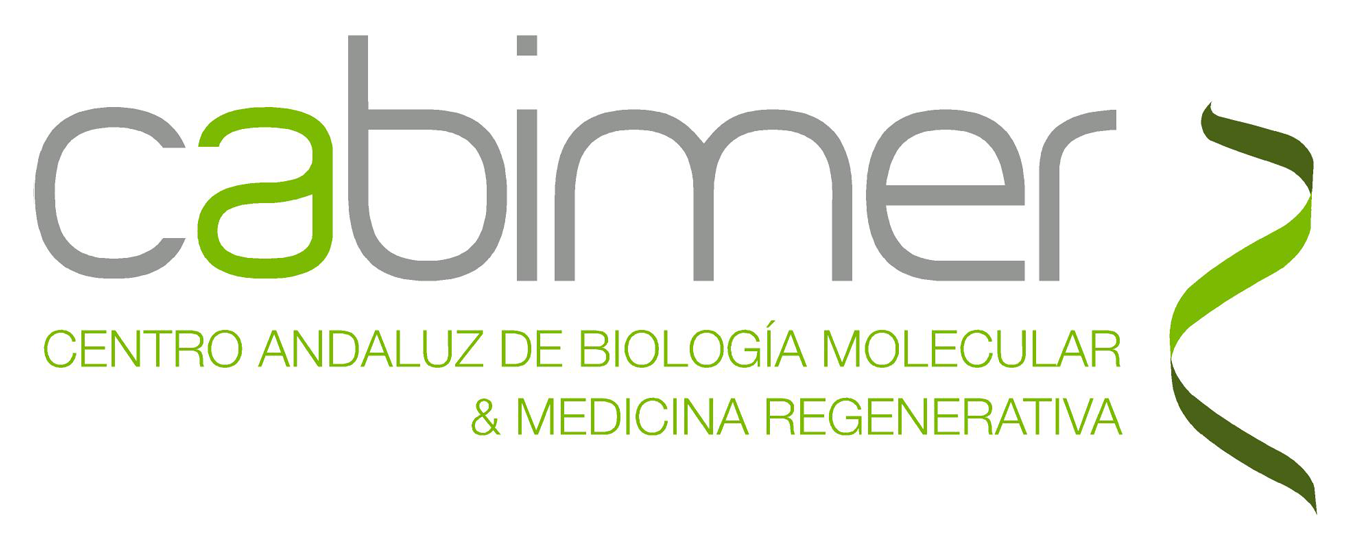Ubiquitin (-like) signaling and Proteomics
After obtaining an EMERGIA 2020 grant from the Andalusian Regional Government and being selected in the Ramon y Cajal 2020 program from the Spanish Ministry of Science I have recently joined CABIMER as an Emerging PI and visiting Scientist.
Since May 2018, I am a Senior Researcher and independent Junior PI in the Cell and Chemical Biology Department at the Leiden University Medical Center (LUMC), The Netherlands, after obtaining a Young Investigator Grant from the Dutch Cancer ociety (€k548). This grant enabled me to lead the “Genome (Ubiquitin-like) proteomics” group and hire my first PhD Student.
In my group, we are specialized in the identification and characterization of ubiquitination substrates in a ubiquitin ligase-specific manner employing our own developed TULIP2 methodology (Salas-lloret et al. 2019).
Previously, from February 2013 to May 2018 I was a postdoc in Alfred Vertegaal’s group at the LUMC, studying the role of the Small Ubiquitin-Like Modifier (SUMO) in DNA repair and Cancer progression. I published four first author publication and was allowed to lead my DNA repair-related projects, which is reflected in two corresponding author publications (Gonzalez-Prieto et al. 2015a, Gonzalez-Prieto et al. 2015b, Kumar,Gonzalez-Prieto et al. 2017, Gonzalez-Prieto et al 2021). Furthermore, I participated in several collaborative projects.
I did my PhD in Felix Prado’s group at CABIMER/CSIC, Seville, Spain. studying the role of the Homologous Recombination machinery during DNA replication and its control by cell cycle, which was published in EMBO Journal (Gonzalez-Prieto et al. 2013).
Previous to my PhD, I worked in the Gañan-Calvo group at the School of Engineering, University of Seville, Spain. My project aimed to develop biomedical application to their developed technology, Flow Focusing, I discovered a new microfluidic phenomenon, which was published in Nature Physics (Gañan-Calvo et al. 2007).
We study the role of ubiquitin(-like) signaling in the regulation of Genome biology- and cancer-relevant E3 enzymes specific targets.
We use mass spectrometry-based proteomics tools to identify the specific substrates of E3 enzymes which have a role in genome biology. Misregulation of these E3 enzymes leads to the appearance of cancer. Furthermore, we employ cell biology, biochemistry, and molecular biology techniques to unravel the function that ubiquitin signaling has in the regulation of the activity of these ubiquitin target proteins.
Among others We apply it on ubiquitin ligases relevant in DNA repair and cancer. Particularly, this grant aims to identify the specific substrates for the BRCA1/BARD1 heterodimer, which deficiency is the first cause of hereditary breast and ovarian cancer. The role of the ubiquitin ligase activity of BRCA1/BARD1 in DNA repair and Cancer remains controversial.
Post translational modifications play a very important role in the fine tuning of protein function. These modifications can consist in the addition of small chemical groups or the covalent attachment of other small proteins. Among the small proteins that can be attached to other proteins, the most relevant one is ubiquitin.
Ubiquitination consists of a cascade reaction performed by the so called E1, E2 and E3 enzymes. More than 600 E3 enzymes are encoded in the human genome. In the lab, we combine mass-spectrometry based proteomics approaches to identify E3-specific ubiquitination substrates with molecular biology, biochemistry and cell biology techniques to unravel the role of ubiquitination on the regulation of these ubiquitinated proteins.
Ubiquitin signaling is involved in practically every single cellular process, having a very high importance in the organisational dynamics of the genome including the DNA damage response. The DNA damage response consists of the plethora of signaling pathways and enzymatic activities that cells are endorsed with in order to overcome the different sources of DNA damage that challenge the integrity of their genomes.
Ubiquitin signaling is involved in practically every single cellular process, having a very high importance in the organisational dynamics of the genome including the DNA damage response. The DNA damage response consists of the plethora of signaling pathways and enzymatic activities that cells are endorsed with in order to overcome the different sources of DNA damage that challenge the integrity of their genomes.
Deficiencies in the DNA damage response cause genome instability, which is one of the hallmarks of cancer.
The aim of our research is to discover new components of the DNA damage response machinery that could become targets of anti-cancer treatments in the future.
Projects as PI
- UbiGap: Understanding under-replicated DNA gaps signaling and processing with a focus on ubiquitin. (EMERGIA20-00276) – Junta de Andalucía – Andalusian Regional Government.
- Identification of BRCA/BARD1 ubiquitin E3 ligase target proteins to obtain novel insight in breast- and ovarían cancer (KWF-YIG 11367) – Dutch Cancer Foundation.
Main Scientific Articles from the group :
1 Salas-Lloret, D. et al. BRCA1/BARD1 ubiquitinates PCNA in unperturbed conditions to promote continuous DNA synthesis. Nature communications 15, 4292 (2024). https://doi.org/10.1038/s41467-024-48427-6
2 Salas-Lloret, D. et al. SUMO-activated target traps (SATTs) enable the identification of a comprehensive E3-specific SUMO proteome. Sci Adv 9, eadh2073 (2023). https://doi.org/10.1126/sciadv.adh2073
3 Salas-Lloret, D. & Gonzalez-Prieto, R. Insights in Post-Translational Modifications: Ubiquitin and SUMO. Int J Mol Sci 23 (2022). https://doi.org/10.3390/ijms23063281
4 Gonzalez-Prieto, R. et al. Global non-covalent SUMO interaction networks reveal SUMO-dependent stabilization of the non-homologous end joining complex. Cell Rep 34, 108691 (2021). https://doi.org/10.1016/j.celrep.2021.108691
5 Salas-Lloret, D., Agabitini, G. & Gonzalez-Prieto, R. TULIP2: An Improved Method for the Identification of Ubiquitin E3-Specific Targets. Front Chem 7, 802 (2019). https://doi.org/10.3389/fchem.2019.00802
6 Kumar, R., Gonzalez-Prieto, R., Xiao, Z., Verlaan-de Vries, M. & Vertegaal, A. C. O. The STUbL RNF4 regulates protein group SUMOylation by targeting the SUMO conjugation machinery. Nature communications 8, 1809 (2017). https://doi.org/10.1038/s41467-017-01900-x
7 Gonzalez-Prieto, R., Cuijpers, S. A., Luijsterburg, M. S., van Attikum, H. & Vertegaal, A. C. SUMOylation and PARylation cooperate to recruit and stabilize SLX4 at DNA damage sites. EMBO reports 16, 512-519 (2015). https://doi.org/10.15252/embr.201440017
8 Gonzalez-Prieto, R., Cuijpers, S. A., Kumar, R., Hendriks, I. A. & Vertegaal, A. C. c-Myc is targeted to the proteasome for degradation in a SUMOylation-dependent manner, regulated by PIAS1, SENP7 and RNF4. Cell Cycle 14, 1859-1872 (2015). https://doi.org/10.1080/15384101.2015.1040965
9 Gonzalez-Prieto, R., Munoz-Cabello, A. M., Cabello-Lobato, M. J. & Prado, F. Rad51 replication fork recruitment is required for DNA damage tolerance. The EMBO journal 32, 1307-1321 (2013). https://doi.org/10.1038/emboj.2013.73
10 Gañán-Calvo, A. M., González-Prieto, R., Riesco-Chueca, P., Herrada, M. A. & Flores-Mosquera, M. Focusing capillary jets close to the continuum limit. Nat Phys 3, 737-742 (2007). https://doi.org/10.1038/nphys710
Collaborations from the last 5 years:
1 Nguyen, B. A. et al. Structural polymorphism of amyloid fibrils in ATTR amyloidosis revealed by cryo-electron microscopy. Nature communications 15, 581 (2024). https://doi.org/10.1038/s41467-024-44820-3
2 Rodrigues, J. S. et al. dsRNAi-mediated silencing of PIAS2beta specifically kills anaplastic carcinomas by mitotic catastrophe. Nature communications 15, 3736 (2024). https://doi.org/10.1038/s41467-024-47751-1
3 Yanez-Vilches, A. et al. Physical interactions between specifically regulated subpopulations of the MCM and RNR complexes prevent genetic instability. PLoS genetics 20, e1011148 (2024). https://doi.org/10.1371/journal.pgen.1011148
4 Yalcin, Z. et al. UBE2D3 facilitates NHEJ by orchestrating ATM signalling through multi-level control of RNF168. Nature communications 15, 5032 (2024). https://doi.org/10.1038/s41467-024-49431-6
5 Condezo, Y. B. et al. RNF212B E3 ligase is essential for crossover designation and maturation during male and female meiosis in the mouse. Proceedings of the National Academy of Sciences of the United States of America 121, e2320995121 (2024). https://doi.org/10.1073/pnas.2320995121
6 Yalcin, Z. et al. Ubiquitinome Profiling Reveals in Vivo UBE2D3 Targets and Implicates UBE2D3 in Protein Quality Control. Molecular & cellular proteomics : MCP 22, 100548 (2023). https://doi.org/10.1016/j.mcpro.2023.100548
7 van den Heuvel, D. et al. A disease-associated XPA allele interferes with TFIIH binding and primarily affects transcription-coupled nucleotide excision repair. Proceedings of the National Academy of Sciences of the United States of America 120, e2208860120 (2023). https://doi.org/10.1073/pnas.2208860120
8 Fan, C. et al. The lncRNA LETS1 promotes TGF-beta-induced EMT and cancer cell migration by transcriptionally activating a TbetaR1-stabilizing mechanism. Sci Signal 16, eadf1947 (2023). https://doi.org/10.1126/scisignal.adf1947
9 van Dinther, M. et al. CD44 acts as a coreceptor for cell-specific enhancement of signaling and regulatory T cell induction by TGM1, a parasite TGF-beta mimic. Proceedings of the National Academy of Sciences of the United States of America 120, e2302370120 (2023). https://doi.org/10.1073/pnas.2302370120
10 Tessier, S. et al. Exploration of nuclear body-enhanced sumoylation reveals that PML represses 2-cell features of embryonic stem cells. Nature communications 13, 5726 (2022). https://doi.org/10.1038/s41467-022-33147-6
11 Blessing, C. et al. XPC-PARP complexes engage the chromatin remodeler ALC1 to catalyze global genome DNA damage repair. Nature communications 13, 4762 (2022). https://doi.org/10.1038/s41467-022-31820-4
12 Kamp, J. A. et al. THO complex deficiency impairs DNA double-strand break repair via the RNA surveillance kinase SMG-1. Nucleic acids research 50, 6235-6250 (2022). https://doi.org/10.1093/nar/gkac472
13 Salas-Lloret, D. & Gonzalez-Prieto, R. Insights in Post-Translational Modifications: Ubiquitin and SUMO. Int J Mol Sci 23 (2022). https://doi.org/10.3390/ijms23063281
14 Kumar, S. et al. Targeting pancreatic cancer by TAK-981: a SUMOylation inhibitor that activates the immune system and blocks cancer cell cycle progression in a preclinical model. Gut 71, 2266-2283 (2022). https://doi.org/10.1136/gutjnl-2021-324834
15 Tessier, S. et al. Unbiased <em>in vivo</em> exploration of nuclear bodies-enhanced sumoylation reveals that PML orchestrates embryonic stem cell fate. bioRxiv, 2021.2006.2029.450368 (2021). https://doi.org/10.1101/2021.06.29.450368
16 Apelt, K. et al. ERCC1 mutations impede DNA damage repair and cause liver and kidney dysfunction in patients. J Exp Med 218 (2021). https://doi.org/10.1084/jem.20200622
17 Goossens, R. et al. A proteomics study identifying interactors of the FSHD2 gene product SMCHD1 reveals RUVBL1-dependent DUX4 repression. Sci Rep 11, 23642 (2021). https://doi.org/10.1038/s41598-021-03030-3
18 van den Heuvel, D. et al. A CSB-PAF1C axis restores processive transcription elongation after DNA damage repair. Nature communications 12, 1342 (2021). https://doi.org/10.1038/s41467-021-21520-w
19 van der Weegen, Y. et al. ELOF1 is a transcription-coupled DNA repair factor that directs RNA polymerase II ubiquitylation. Nature cell biology 23, 595-607 (2021). https://doi.org/10.1038/s41556-021-00688-9
20 Cabello-Lobato, M. J. et al. Physical interactions between MCM and Rad51 facilitate replication fork lesion bypass and ssDNA gap filling by non-recombinogenic functions. Cell Rep 36, 109440 (2021). https://doi.org/10.1016/j.celrep.2021.109440
21 Singh, J. K. et al. Zinc finger protein ZNF384 is an adaptor of Ku to DNA during classical non-homologous end-joining. Nature communications 12, 6560 (2021). https://doi.org/10.1038/s41467-021-26691-0
22 Koedoot, E. et al. Splicing factors control triple-negative breast cancer cell mitosis through SUN2 interaction and sororin intron retention. J Exp Clin Cancer Res 40, 82 (2021). https://doi.org/10.1186/s13046-021-01863-4
23 Cano-Linares, M. I. et al. Non-recombinogenic roles for Rad52 in translesion synthesis during DNA damage tolerance. EMBO reports 22, e50410 (2021). https://doi.org/10.15252/embr.202050410
24 van den Heuvel, D. et al. A CSB-PAF1C axis restores processive transcription elongation after DNA damage repair. bioRxiv, 2020.2001.2004.894808 (2020). https://doi.org/10.1101/2020.01.04.894808
25 van der Weegen, Y. et al. The cooperative action of CSB, CSA, and UVSSA target TFIIH to DNA damage-stalled RNA polymerase II. Nature communications 11, 2104 (2020). https://doi.org/10.1038/s41467-020-15903-8
26 Liu, S. et al. Deubiquitinase Activity Profiling Identifies UCHL1 as a Candidate Oncoprotein That Promotes TGFbeta-Induced Breast Cancer Metastasis. Clin Cancer Res 26, 1460-1473 (2020). https://doi.org/10.1158/1078-0432.CCR-19-1373
27 Gjonaj, L. et al. USP7: combining tools towards selectivity. Chem Commun (Camb) 55, 5075-5078 (2019). https://doi.org/10.1039/c9cc00969h
28 Sha, Z., Blyszcz, T., Gonzalez-Prieto, R., Vertegaal, A. C. O. & Goldberg, A. L. Inhibiting ubiquitination causes an accumulation of SUMOylated newly synthesized nuclear proteins at PML bodies. The Journal of biological chemistry 294, 15218-15234 (2019). https://doi.org/10.1074/jbc.RA119.009147








